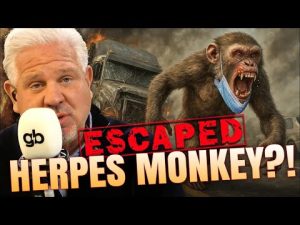In Mississippi, chaos erupted recently when a truck carrying research monkeys overturned on Interstate 59. This bizarre situation raises serious concerns about public safety and the questionable practices behind transporting such animals. With reports initially indicating these monkeys could be infected with diseases like hepatitis and COVID, citizens deserve answers—not only about how this incident happened but also why these animals were being transported in the first place.
Authorities have stated that the truck was carrying nearly two dozen monkeys, and after the crash, several escaped into the wild. While initial reports suggested a potential public health threat, the Jasper County Sheriff’s Office later confirmed that the monkeys were not infectious. With loose monkeys described as potentially aggressive, this incident highlights a significant failure in ensuring public safety during animal transportation. What kind of oversight allows for such a dangerous scenario?
It’s alarming to think that allowing a situation where monkeys escape could have been more serious had they been infectious. However, authorities denying the infectious status of these monkeys mitigates the immediate public health threat. Nevertheless, the transportation of animals requires careful handling and regulation.
It’s not only the initial health scare that is troubling. The very fact that this idea of transporting research animals isn’t heavily regulated leaves many wondering what other risks are lurking out there. Are there plans in place to ensure something like this doesn’t happen again? Or are we expected to brush it off as just another issue? As Americans, we need to demand better from those in charge of public safety. We should not turn a blind eye to any negligence when it comes to handling potentially dangerous animals.
As the incident continues to unfold, it’s crucial for residents and policymakers alike to reflect on the broader implications. This event is not just a quirky news story; it reflects significant flaws in our regulatory systems concerning animal transportation and public safety. Three monkeys remain on the loose, emphasizing the need for greater responsibility and safety measures in transportation methods. The future of public health may depend on it.







